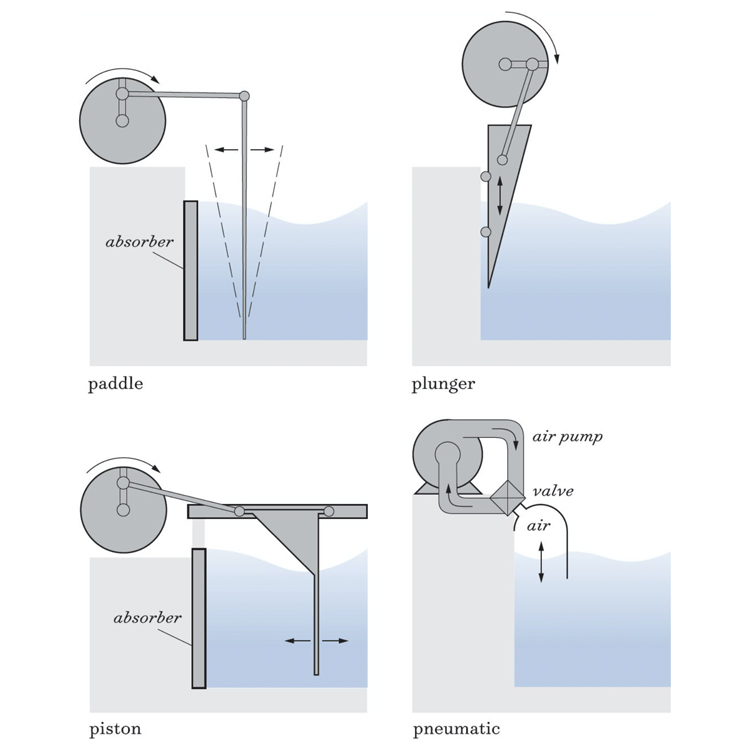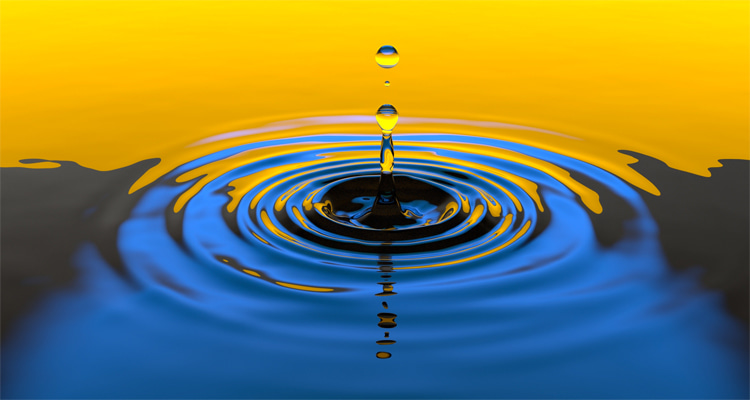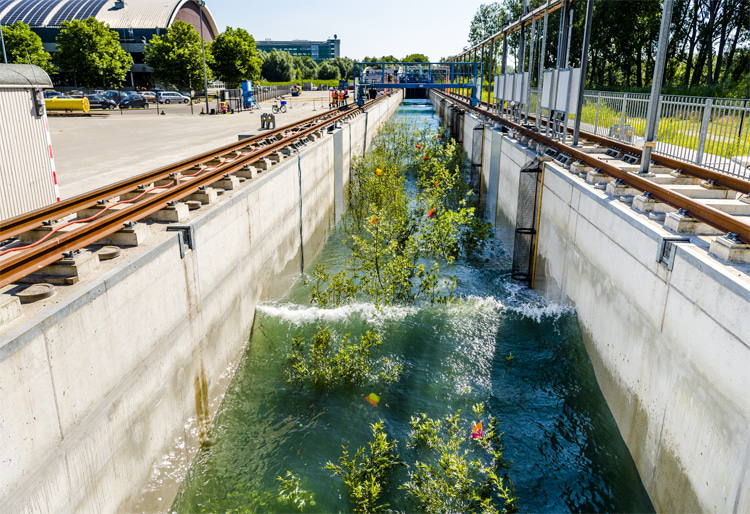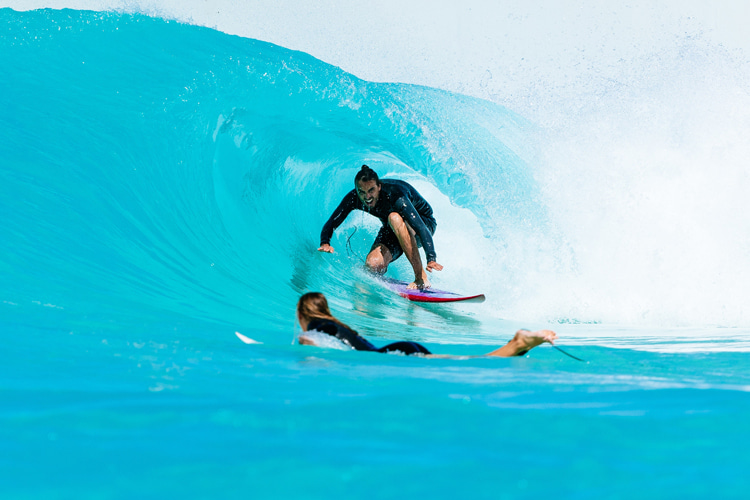How do you generate a surfing wave in a controlled environment? Let's take a look at the different types of wave-making models and concepts.
Wave pools are the future of inland surfing, and a new industry was born to provide perfect surfable waves in limited outdoor and indoor spaces.
The first experiments with human-made waves date back to the 19th century, but today, several facilities create experimental waves.
They can be created in small laboratories or large, football field-size water basins.
The goal of these experiments is to understand how certain waves behave, what their shapes are, how they propagate, and under which conditions they refract, reflect, and diffract.
Swells have a daily impact on the world's coastlines, so it is critical to know the potential threats to human activity.
Waves also explain why breakwaters, groins, jetties, and seawalls are built and are fundamental factors in creating harbors and marinas.
But they're also a variable that must be considered in the preservation of dune systems and the protection of private and public property built near the shoreline.
The same need for studies applies to naval architects, who need to determine the level of stress swells have on hulls and other ship structures.

Types of Wave-Making Models
In theory, there are four main types of wave-making models, and each one of them has specific advantages depending on the desired outcome.
"No particular ingenuity is required to produce waves in a tank, note Willard Bascom and Kim McCoy, authors of the book "Waves and Beaches."
"In fact, it would be a much more remarkable feat to do anything to the water without making waves."
The four model tank wavemakers can use either a paddle, a plunger, a piston, or a pneumatic mechanism, as seen in the figure above.
"The paddle, the plunger, and the piston are all connected by a rigid arm to an eccentrically located pin on a turning wheel and thus directly produce mathematically satisfying sine waves," explain Bascom and McCoy.
Whenever you reduce the speed of the driving wheel, the wave period lengthens; on the other hand, if you increase the radius of the pin connection, the wave height increases.
These three air pressure systems are often installed in long and narrow wave channels to simulate several wave sizes.
And then there's the pneumatic formula.
"Pneumatic wavemakers are mounted side by side along two walls of large, square tanks," the authors point out.
"They create waves by changing the air pressure beneath a hood so that the water surface there rises and falls."
"As the water surface inside the hood is depressed, the pressure is transmitted, according to Pascal's law, through the water to the water immediately on the other side of the partition where the surface is raised."
That's when the generated disturbance will start to travel across the tank.
By controlling the amount and duration of air pressure blown by the motor, it is possible to control the amplitude of the waves and the wavelength, respectively.
The pneumatic wave-generating mechanism is similar to the creation of natural waves. The wind blows over the surface of the ocean, creating ripples that will travel and eventually reach the coastline.
According to Willard Bascom and Kim McCoy, "This process is very important to understanding how capillary waves grow into surface gravity waves."

Artificial Wave Generators
With recent technological developments, it has become easier, less expensive, and more practical to use computer modeling in artificial wave-generating simulations.
And that's precisely what the wave pool industry is doing right now.
Nevertheless, there are still several large, "analog" wave-making facilities in use across the world.
The Hydraulics Laboratory at Scripps Institution of Oceanography in La Jolla, California, has one glass-walled wave channel and a wind wave channel.
They are used to generate waves under controlled heights and periods.
The world's longest wave flume is available at the University of Hannover's Coastal Research Centre and is 1,000 feet (330 meters) long.
The Delta Flume in the Netherlands is 985 feet (300 meters) long, 31 feet (9.5 meters) deep, and 16 feet (five meters) wide.
The water reservoir containing nine million liters of fresh water is able to produce 14.8-foot (4.5 meters) high waves.
The Offshore Technology Research Center in College Station, Texas, has a 150-foot (46 meters) long and 100-foot (30 meters) wide basin that can simulate ocean waves from several directions and gusty winds.

Homemade Wave Pools
Making waves is easy.
"A very small drop of water landing on a still-water surface will generate surface wrinkles (capillary waves) that radiate outward," show Bascom and McCoy.
"As the size of the drop is increased, the capillary waves will be seen to be followed by tiny gravity waves that plainly have a longer wavelength."
"An eyedropper and a bathtub are all the equipment needed."
Making fully functioning rideable waves requires a bit more time and materials. In the end, all you need to have is a mechanism that displaces water correctly.
But you don't need to be an engineer and spend a lot of money to build a homemade wave pool.
It's a doable challenge, as long as you have a generous area where you can install a surfable wave, a few resources and materials, and a helping hand.
There are several self-made artificial wave pools in the world.
One of the most popular and interesting prototypes was designed and built by Fred Coblyn in Indonesia.
"Fred's Wave" can generate a small roller using human energy (arm power) or, alternatively, a micro-power generator that produces a wave for under four cents.
Also, Garrett Johnson, founder of Ocean Innovations, once introduced a portable backyard wave pool concept that created a narrow wave with simple equipment.
"Many years ago, at the University of Kenya, there was no money for a mechanical wave generator," reveal the authors of "Waves and Beaches."
"Instead, one of the students rocked a piece of plywood, whose lower edge rested on the tank bottom, back and forth between two chalk lines on the tank rim, timing the action with the second hand of a watch."
